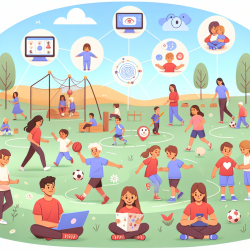As a practitioner working with children with Autism Spectrum Disorders (ASD), it's crucial to understand the nuances of how ASD manifests differently in boys and girls. The research paper, "Autism Symptoms and Internalizing Psychopathology in Girls and Boys with Autism Spectrum Disorders," provides valuable insights that can enhance your therapeutic approaches and encourage further research in this field.
Key Findings from the Research
The study compared autism and internalizing symptoms in girls and boys with ASD and typically developing (TYP) peers. Here are some significant findings:
- Girls with ASD are more impaired than TYP girls but do not differ significantly from boys with ASD in autism symptoms.
- In adolescence, girls with ASD exhibit higher internalizing symptoms, including depression, compared to boys with ASD and TYP girls.
- Girls with ASD resemble boys with ASD more closely than TYP girls, especially in social and language impairments.
Implications for Practitioners
Understanding these findings can help you tailor your therapeutic approaches to better meet the needs of both boys and girls with ASD. Here are some practical steps you can take:
- Early Identification and Intervention: Since girls with ASD may present symptoms differently, it's essential to use diagnostic tools that account for these differences. Early identification can lead to more effective interventions.
- Focus on Internalizing Symptoms: Given the higher risk of internalizing psychopathology in girls with ASD, consider incorporating cognitive-behavioral strategies that address anxiety and depression into your therapy sessions.
- Gender-Specific Approaches: Be mindful of the gender differences in social and language impairments. Tailoring your approach to meet the unique needs of each gender can lead to better outcomes.
- Parental Involvement: Educate parents about the differences in symptom presentation between boys and girls with ASD. This can help them better understand and support their child's unique needs.
Encouraging Further Research
While this study provides valuable insights, it also highlights the need for more research, particularly in understanding the neurobiological underpinnings of these gender differences. Encouraging and participating in further research can contribute to a more comprehensive understanding of ASD and lead to more effective interventions.
Conclusion
The findings from this research emphasize the importance of recognizing and addressing the unique challenges faced by girls with ASD. By implementing these insights into your practice, you can better support your students and contribute to their overall well-being.
To read the original research paper, please follow this link: Autism Symptoms and Internalizing Psychopathology in Girls and Boys with Autism Spectrum Disorders.










